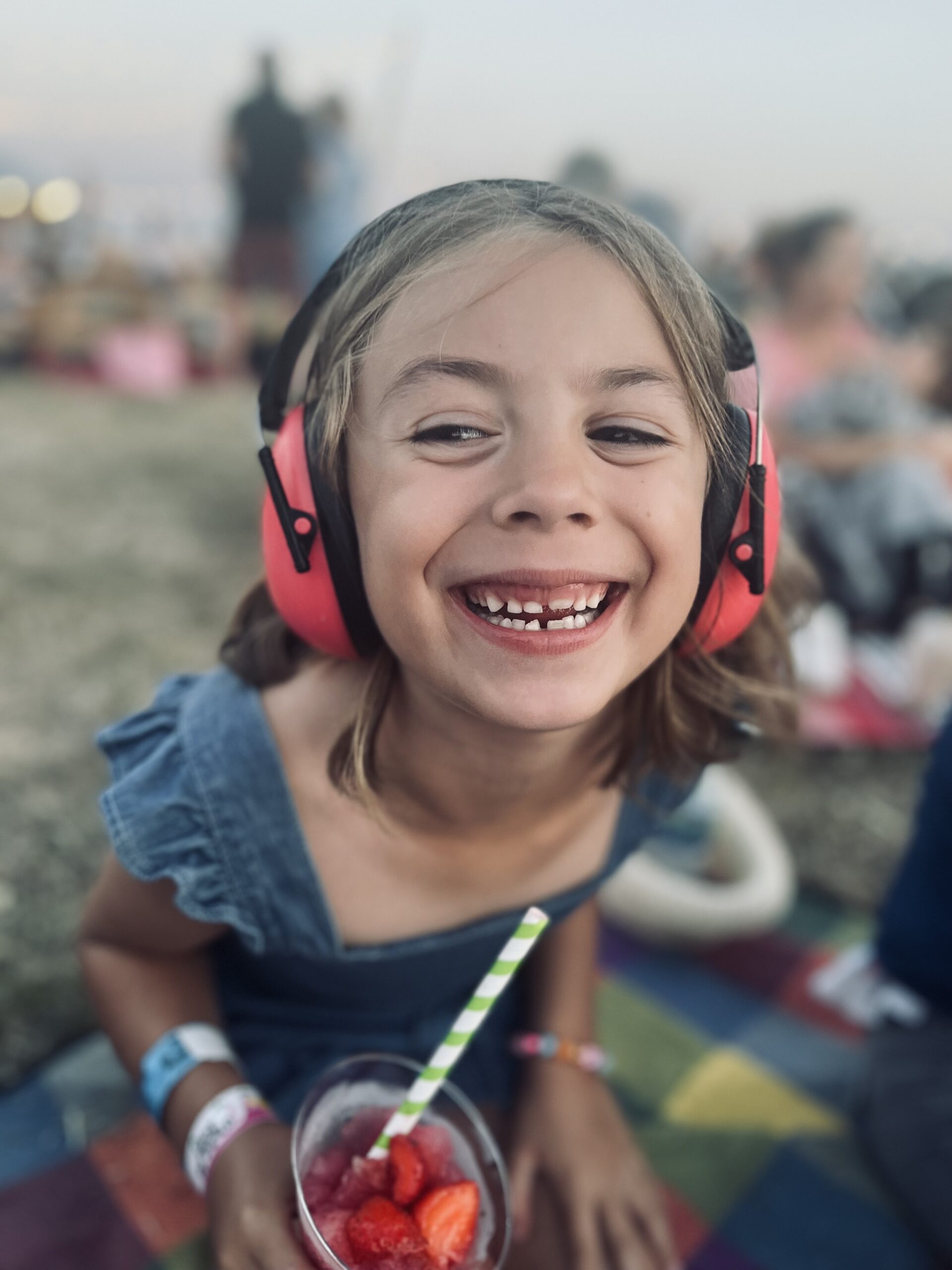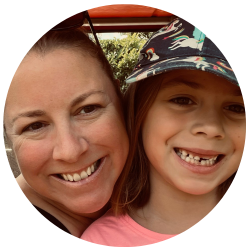Izzie, a young AVM warrior, found a way to tell her classmates about living with a rare disease by giving a presentation during class time. It went so well, she decided to present it later to her entire primary school! Anna, Izzie’s Mum, helped by communicating with teachers and members of Izzie’s neuro team to ensure Izzie was confident and fully prepared. They make a great team.
Enjoy an excerpt of Izzie’s triumphant presentation, then stick around for a short interview of this dynamic duo.
San (TAAF Talk Magazine Managing Editor): Anna, thank you so much for sharing Izzie’s Rare Disease presentation; it is just a delight to watch. The inner TAAF community has known you for a while now. For those of us in the greater community, will you share a bit of what happened to Izzie?
Anna (Izzie’s Mum): Yes, of course. Izzie was a previously fit and well child, until last June when she awoke one morning saying "Mummy, my brain really hurts." I did the usual thing of providing a drink of water and some pain killers and suggested she go back to sleep. Within thirty minutes, she was vomiting uncontrollably, and I assumed she had a bad stomach bug. Her face was grey; she looked so very unwell. This carried on for most of the day, and I became more concerned when I realised she couldn't seem to move her head a short distance to be sick into a bucket. We had gone through several sets of bedding at this point, which was very unusual. A lovely nurse at our local doctor's surgery was able to see her and was also quite concerned. She wanted to see us again first thing in the morning if Izzie didn't improve. When evening came, she had stopped vomiting but was extremely tired. She had a very brief spell of getting her words a bit jumbled. I turned to my husband James and very quietly said "her speech is off, is she having a stroke?" Of course (at the time) that sounded such an utterly ridiculous thing to say about a 6 year old, that we put it down to her being exhausted. She fell asleep and we thought perhaps she was through the worst.
She seemed to have a good night's sleep and the next morning, although tired, she seemed a little better. Izzie's Nana stayed with her at home because I had to go out. Suddenly, I got two phone calls in quick succession from my mother-in-law. She was concerned that Izzie's face had started to twitch on one side and she didn't appear able to talk. I got home as quickly as possible and as soon as I saw her I knew something was very wrong. We called an ambulance who came to check her over. In true stubborn Izzie style, she insisted on walking herself into the ambulance. She was still unable to talk, suffering from one-sided facial twitching, and was becoming distressed. By the time we had traveled just a mile or two towards the hospital, her face had stopped twitching, but she had deteriorated to such an extent that she was completely vacant, vomiting and foaming at the mouth. The lights and sirens began and within minutes we arrived in Resus (Resuscitation Area) at our local hospital. She had an immediate CT scan which confirmed the doctors’ fears that she had suffered a brain haemorrhage.
We were quickly transferred in another ambulance to a hospital about an hour away with a specialist Paediatric Neurosurgery team. Fortunately Izzie's bleed stopped itself, so no emergency surgery was deemed to be needed at that time. They kept her in for 8 days under regular Neuro observation, in which time they performed an angiogram, confirming the neurosurgery team's likely diagnosis of an AVM. We also discovered that she had an aneurysm on a weak feeder artery into the AVM, where it is suspected the bleed originated. During her time in hospital, Izzie gradually regained her speech and her ability to smile.
San: Thank you for sharing that. Anna, how and when did you find TAAF?
Anna: The weeks and months after Izzie's haemorrhage and diagnosis, I didn't sleep much. Late nights were spent online searching for support, reading article after article in medical journals, trying my best to understand what had happened and what was likely to happen going forwards. I sat through hours and hours of online lectures on aneurysms and AVMs aimed at medical students. I joined every Facebook group available. In one such group I came across TAAF and the wonderful Dina Chon, who facilitates the monthly support groups online and is an incredible support to us all.
San: Hi Izzie. I very much liked your Rare Disease Day presentation. Well done! Would you encourage kids like you to share their AVM story and why?
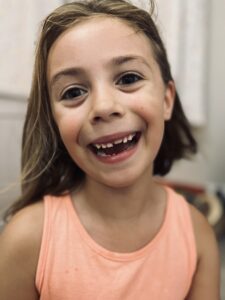 Izzie (Elementary-age AVM warrior, and Anna’s daughter): Yes, I would encourage other kids to share their story because it might make them feel better and not so alone. I think it is helpful that my friends understand more about my AVM and brain injury now.
Izzie (Elementary-age AVM warrior, and Anna’s daughter): Yes, I would encourage other kids to share their story because it might make them feel better and not so alone. I think it is helpful that my friends understand more about my AVM and brain injury now.
San: Izzie, you looked like such a pro. What was the best part of giving your presentation?
Izzie: That I didn't have to worry about keeping it from my friends anymore–even the older children now understand. I feel happier knowing that I have shared my story on my own terms, so I'm more in control of it.
San: Being in control is important. How old were you when you discovered you had an AVM and how old are you now?
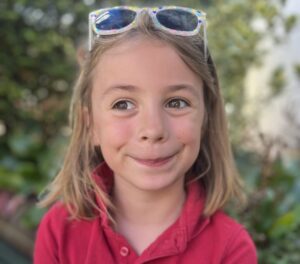
Izzie: I was 6 and a half when I had my brain bleed which led to them finding my AVM, and now I am 7 and a quarter.
San: ‘And a quarter;’ I love that. Anna, do you have advice for caregivers of kids who want to share their story like Izzie did?
Anna: I believe it's very important for them, psychologically, to be in control of their own story. It's such a lot of trauma for children so young to go through, and I believe it helps them to process everything that has happened and to begin to cope with it. The presentation writing process also opens up conversation and opportunities to discuss questions about their care that they may not have asked before. Izzie initially gave a smaller presentation to her class which was at the suggestion of a member of her medical team. I can't stress enough how important it is to make sure these kids have access to specialist Peadiatric Neuropsychologists. Izzie's has been incredible and a constant for us during this process. She has stayed in regular contact with Izzie's school, who have also been amazing during this process and an absolutely invaluable support to us all.
It took a long time for Izzie to get her head around the idea; but once she had presented to her class, she immediately seemed calmer. A few weeks later she decided she would like to present to her whole school, which is how her assembly for Rare Disease Day was born. With regard to sharing, it can be however the child feels most comfortable. Not all children would want to present an assembly to an entire primary school. They could make videos and share them with friends or even write entries in a diary that they may or may not ever choose to share, but these activities may still help them process what has happened to them.
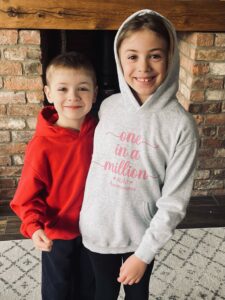
San: Anna, we know not all rare diseases are treatable. In fact, the number identified recently rose to 10,000. AVM is one that has more than one treatment option available to patients who qualify. Will you tell us a little bit about Izzie’s treatments?
Anna: Sadly, we didn't have a choice. Of the three possible treatment options available to us over here in the UK–surgical resection, embolisation, or stereotactic radiosurgery (Gamma Knife)--two were immediately ruled out after her angiogram. The location and complexity of Izzie’s AVM, further complicated by some very tight corners in the vasculature, meant that neither surgery nor embolisation were possible. Izzie was immediately referred to one of the UK's two Gamma Knife Centres that can accommodate children, and she had over two and half hours of SRS in mid-September.
San: Izzie, is there anything you want to tell the TAAF community (kids, caregivers, survivors,) that isn't in the video or that I've not asked?
Izzie: I would like to say thank you. When Mummy told me there were a whole lot of people around the world with the same medical condition as me, it made me feel a lot less alone. Until then, I had thought I might be the only one because I had never met anyone like me.
San: Well, we’re very glad to know you. We’d like to tune in with you both in the future to get updates as you navigate your way through your rare disease journey. Are you okay with that idea?
Izzie: Ok.
Anna: Yes, of course.
Special thanks to Izzie and Anna for sharing the video clip and for a great interview. We look forward to receiving updates on Izzies and family throughout the year. Remember… Just as Anna found, TAAF is a space you can turn to for help and support while navigating your own rare disease journey. Reach out any time at info@taafonline.org.
Click the photo below to learn more about Izzie and Anna.
